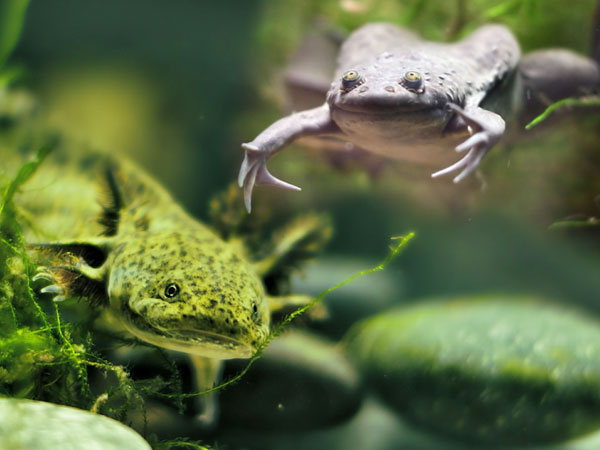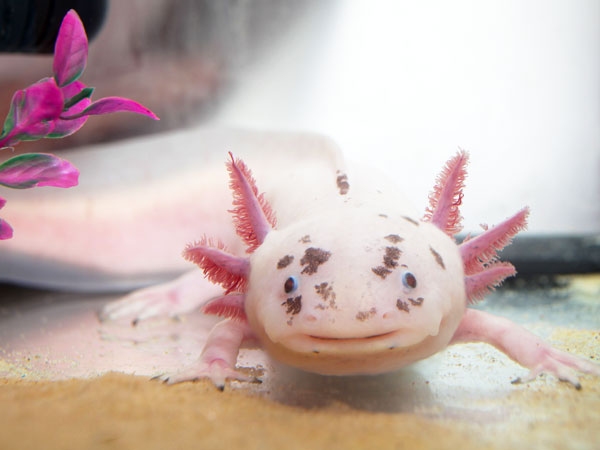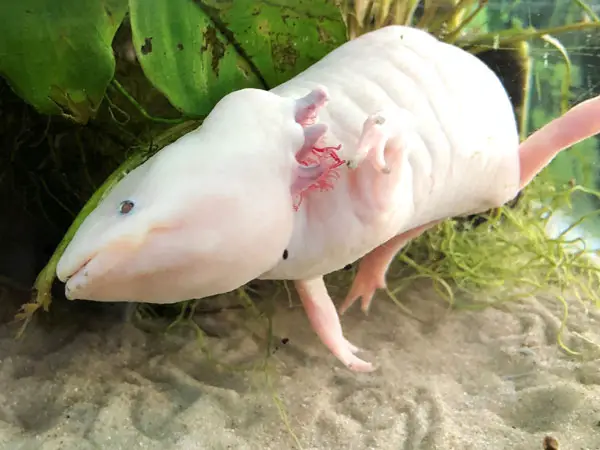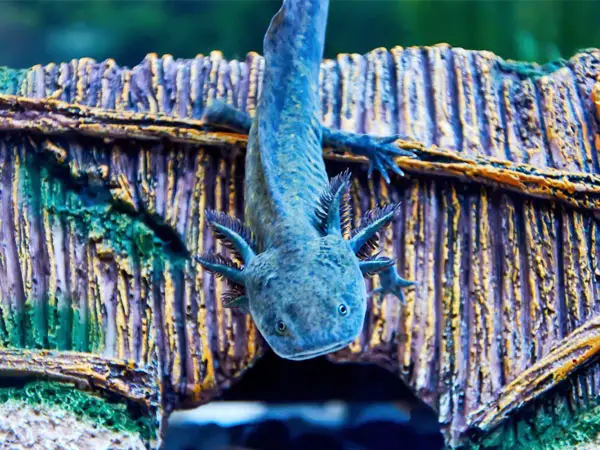Do you want to know whether axolotls are freshwater or saltwater animals?
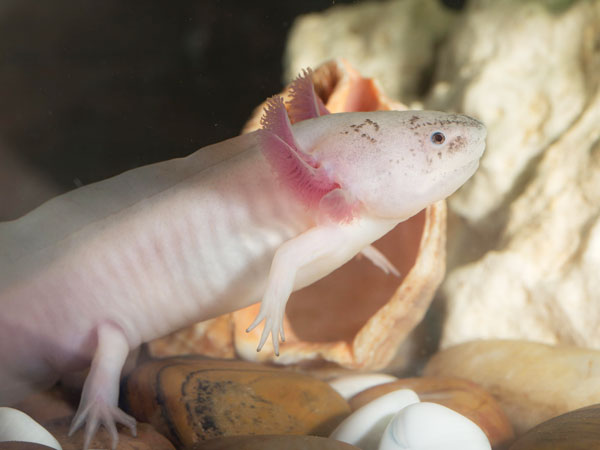
Although they can tolerate a certain level of salinity, axolotls are freshwater animals.
Throughout the years of their development as a species, axolotls have become accustomed to freshwater areas. Unlike salamanders, they will prefer to live in the water and will not do well outside of the water. Salamanders, on the other hand, spend most of their time on land.
However, you can also add some salt to the water occasionally. That’s because axolotls will actually tolerate some salt in the water, which is due to the fact that there is sometimes salt present in their natural habitat.
If you wish to add salt, it’s very important that you do it in moderation and only at the right times. It might even be beneficial in some scenarios – most likely when they have certain skin infections, such as fungal infections. In those cases, salt can be very beneficial to axolotls.
Read on and you’ll learn how and when you can add salt to the water, and how much salt you can add. You’ll also learn more about what sort of water you should use for axolotl tanks.
Can You Add Salt to Axolotl Water?
You can add some salt to the axolotl water, but only in moderate to small amounts, and you should only add sea salt to the water.
Adding some sea salt to the axolotl water can be beneficial for treating various infections such as fungal or bacterial infections. Some experts will also recommend that you do salt baths for axolotls to treat those infections. They can be effective if they are done right, too.
One thing to remember is to not use table salt. That’s because table salt has some ingredients that can be very harmful to axolotls such as iodine. Instead, you should go for pure sea salt, which can be bought in most stores.
So yes, you can add salt to the axolotl water, but it needs to be done in a controlled manner.
When you’re treating fungal infections or other infections, you can add a few spoons of sea salt to the water. First do it slowly though, and observe the effects the salt has on the axolotl’s infection.
How to Make a Salt Bath for Axolotl?
Making a salt bath for your axie is very simple. You just need to follow these steps and get set. Here are the things you’ll need:
- Non-iodized salt – sea salt, aquarium salt, or kosher salt will do
- A separate tank or container that can also be relatively small – clean before use (1l or 2l capacity) and an additional quarantine tank
- Dechlorinated water
Once you have these things ready at your disposal, it’s time to start preparing the salt bath for your axolotl. Follow these steps to make the bath easily.
Step 1: Separate Your Infected Axolotl from the Rest
If you have several axolotls in your tank, you will want to separate the infected axolotl from the rest of the pack.
That’s because the infection can quickly spread to other axolotls if you don’t act quickly. And you don’t want that to happen, which can only cause additional problems.
Create a separate quarantine tank – it can be a small tank, or even the same tank you’ll use for the salt bath. For now, no need for adding the salt yet.
Step 2: Prepare the Bath
Now you will want to prepare the bath and make it ready for the axolotl. To do this, first fill the tank with some water that’s free of chlorine. You’ll need to condition the water first before you put it into the bath.
You will only need about 1-2 liters of water. Make sure the temperature of the water is low enough for the axolotl (15-18 degrees Celsius, 59-64 degrees Fahrenheit).
Once you have the water ready, you can start adding salt. As we’ve mentioned, you’ll need proper sea salt for this. A general rule is to add 2-3 tablespoons of sea salt per liter of water. Then mix the water well and make sure the salt dissolves well.
Step 3: Put the Axolotl into the Bath
So now that your salt bath is ready, you can put the axolotl into the bath. You’ll need to be very gentle when you handle your axolotl, though.
There’s also a danger that your axolotl will freak out when you try to relocate it. It makes sense to have a lid on the salt bath in the event that the axolotl tries to escape.
You should not keep your axolotl in the bath for longer than 10-15 minutes! You can do this every day for a few days continuously and then track the progress with the infection. You can start to tone it done slightly.
Is It Safe to Use Tap Water for Axolotl?
You can use tap water for your axolotl, but make sure you condition it first with a water conditioner to remove chlorine out of the water.
The chlorine might be harmful for the axolotl, so you need to remove it first before you use it for your axolotl tank.
Should You Add Salt After Each Water Change?
You can add salt after every water change, but small amounts of it.
One thing to remember is that salt won’t evaporate, so you will need to cycle the water more frequently with fresh water if you want to completely remove the salt from the water at some point.
How Much Salt Can You Use for Axolotl?
If you want to have salt in your axolotl tank, then I recommend that you add one teaspoon of marine salt for every 10 gallons of water. I have found this to be the best amount of salt for axolotls in the long-term.
However, when I decide to do salt baths, I will add more salt – 1-2 teaspoons of salt per gallon of water. This is done in a separate container where I keep the axolotl for a few minutes.
Conclusion
Axolotls are freshwater animals, but they are also tolerant of sea salt. If you want to add salt, you can add it, but make sure you use pure sea salt that’s free of iodine.
Salt is also sometimes used for salt baths, especially for treating various axolotl infections.

